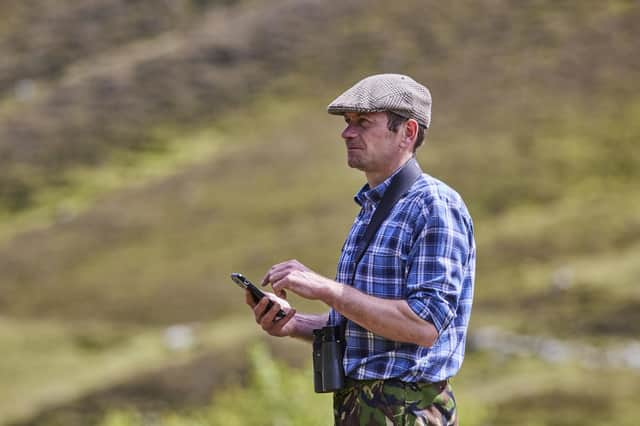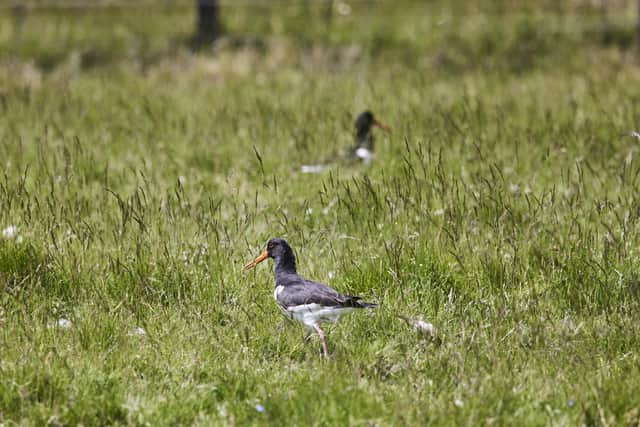Waders bucking the trend in the Cairngorms National Park


Figures for 2022 have just been published, revealing that a variety of wader species on ECMP land holdings are showing stable populations.
The ECMP, which is made up of five neighbouring estates in the eastern Cairngorms and the Cairngorms National Park Authority, have come together to better coordinate the delivery of public benefits alongside private objectives, enhancing habitat diversity, including woodland and scrub expansion and peatland restoration, encouraging diverse wildlife populations and the conservation of priority species, as well as generating a better understanding of moorland management.
Advertisement
Hide AdAdvertisement
Hide AdOne of the key areas of work that the ECMP has been focusing on is wader conservation.


These charismatic birds – including oyster catchers, curlew, snipe and lapwings – head inland every spring to breed and rear their chicks before heading back to the coast for winter.
During the spring and summer, gamekeepers and other estate staff count the birds and monitor their behaviour.
Jos Milner, East Cairngorms Moorland Partnership Officer said: “The results for 2022 show numbers of breeding waders have remained relatively stable over the last five years, contrary to declines elsewhere.
"We have observed some variation between years, which could be caused by differing spring weather conditions, as well as differences in the total survey length each year and depending on staff availability.
“Our results compare favourably with wader densities recorded in farmland hot-spots across the Cairngorms National Park, and on average over the five years we found that combined densities of curlew, lapwing, oystercatcher, redshank and snipe are around 0.22 breeding pairs per hectare, which is encouraging.”
Surveying the birds involves walking transects each spring, with the total length varying between 21 and 36 km, and recording the number and behaviour of waders seen along the way.
The methodology, established by the British Trust for Ornithology (BTO), uses the behaviour of individuals to determine breeding status.
Advertisement
Hide AdAdvertisement
Hide AdA total of between 73 and 151 pairs of breeding waders have been recorded each year representing seven wading bird species, including red-listed curlew and lapwing, and amber-listed common sandpiper, oystercatcher, redshank and snipe.
The curlew is also a Cairngorms Nature priority species.
Since 1995, curlew, lapwing and oystercatcher have experienced population declines of 61 per cent, 57 per cent and 38 per cent respectively in Scotland.
The ECMP estates have been working hard to improve and expand the network of breeding and foraging habitats for waders, contributing to landscape-scale habitat connectivity to support wader conservation.
From managing vegetation to better suit the birds, to creating wader scrapes – shallow pools of water with wide muddy edges which provide areas of insect-rich wet ground ideal for waders and their chicks – these works also help to retain moisture during dry periods, improving the resilience of the habitat to climate change.
The estates also manage predators such as foxes and crows and, in some cases, stoats and weasels to help these ground nesting birds when they are at their most vulnerable.
Mark Nicolson of Mar Estate said: “Waders are long lived birds which return to the same area to breed every year.
"As a result they can give the impression that all is well when they turn up to breed in early spring. However it is not their presence that is important - it is the survival and successful fledging of their chicks.
“With the good summer weather of 2022, and controlled predator numbers, this year was a great wader breeding season, with almost all the nests in Glen Ey producing young which fledged, hopefully to return next year in ever greater numbers.”
Advertisement
Hide AdAdvertisement
Hide AdContinued monitoring will demonstrate the long-term benefits of the range of activities being undertaken by ECMP to protect important populations of breeding waders that are of high conservation concern.